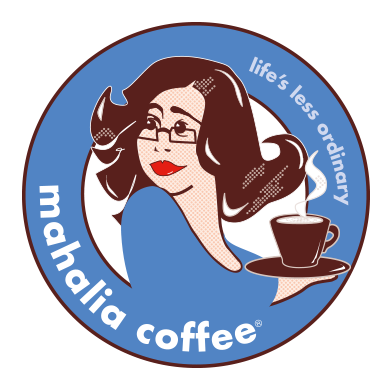
You’d Never Guess It’s Decaf – That’s the Power of the Swiss Water Process ®
Hello, dear coffee friends.
There's something truly special about that first taste of a beautifully crafted coffee, isn't there? Whether you're enjoying a Mahalia Coffee at home or catching up with friends at your favourite café, it's a moment of pure joy. As someone who's spent years behind the espresso machine, sharing stories and perfecting pours, I understand the magic that coffee brings to our lives. Today, I want to share with you the fascinating world of decaffeinated coffee, specifically the Swiss Water® Process—a method that aligns perfectly with our commitment to quality and sustainability.
The Swiss Water® Process: A Gentle Approach to Decaffeination
Decaffeinated coffee often gets a bad rap for lacking flavour or involving harsh chemicals. But the Swiss Water® Process changes that narrative entirely. Developed in Switzerland in the 1930s and refined over decades, this method uses only water, temperature, and time to remove caffeine from coffee beans. No chemicals, no solvents—just pure, clean decaffeination .
Here's how it works:
-
Preparation of Green Coffee Beans: The process begins by cleaning and hydrating green coffee beans to prepare them for caffeine extraction.
-
Creation of Green Coffee Extract (GCE): An initial batch of beans is soaked in hot water, extracting caffeine and soluble flavour compounds. This water, now rich in coffee solubles but caffeine-free, becomes the GCE.
-
Decaffeination of New Beans: Fresh green beans are then soaked in the GCE. Since the GCE is saturated with flavour compounds, only caffeine is drawn out of the beans, leaving their flavour intact. This step is repeated until the beans are 99.9% caffeine-free.
-
Drying and Resting: The decaffeinated beans are dried back to their original moisture content and allowed to rest, stabilising their flavours before roasting.
This meticulous process ensures that the coffee retains its original character and taste, offering a decaf experience that's remarkably close to its caffeinated counterpart.
Why Choose Swiss Water® Decaf?
At Mahalia Coffee, we believe that every cup should be a celebration of flavour and craftsmanship. That's why we exclusively roast beans decaffeinated through the Swiss Water® Process. Here's why this method stands out:
-
Chemical-Free Decaffeination: Unlike methods that use solvents like methylene chloride or ethyl acetate, the Swiss Water® Process is entirely chemical-free. This not only makes for a cleaner cup but also aligns with our commitment to health and safety .
-
Flavour Preservation: By avoiding chemicals, the natural flavours of the coffee are preserved. The result is a decaf coffee that doesn't compromise on taste.
-
Certified Organic: The process is certified organic under the USDA's National Organic Program, ensuring that organic beans remain organic throughout decaffeination .
-
Environmental Responsibility: The Swiss Water® Process is environmentally friendly, minimising waste and conserving water. It's a sustainable choice for eco-conscious coffee lovers.

Understanding Other Decaffeination Methods
To appreciate the Swiss Water® Process fully, it's helpful to understand how it compares to other decaffeination methods:
-
Methylene Chloride Method: This solvent-based method uses methylene chloride to extract caffeine. While effective, concerns have been raised about potential health risks associated with residual chemicals .
-
Ethyl Acetate Method: Often marketed as "natural," this method uses ethyl acetate, which can be derived from fruits or synthetically produced. It may impart a fruity aftertaste and, like methylene chloride, involves chemical solvents.
-
Carbon Dioxide (CO₂) Method: This method uses liquid CO₂ under high pressure to extract caffeine. It's a chemical-free process but requires specialised equipment and can be costly.
Each method has its merits and drawbacks, but for us, the Swiss Water® Process offers the best balance of flavour preservation, health considerations, and environmental responsibility.
A Commitment to Quality
In a time when the cost of green coffee beans is soaring, we remain steadfast in our commitment to quality. We understand that every bean has a story, and we honour that by choosing decaffeination methods that respect the integrity of the coffee. The Swiss Water® Process allows us to offer decaf options that are as rich and satisfying as our regular blends.
So, the next time you're seeking a decaf coffee that doesn't compromise on taste or values, remember that Mahalia Coffee has you covered. We're proud to bring you the best of both worlds: full flavour and peace of mind.
With warmth,
The Mahalia Coffee Team
